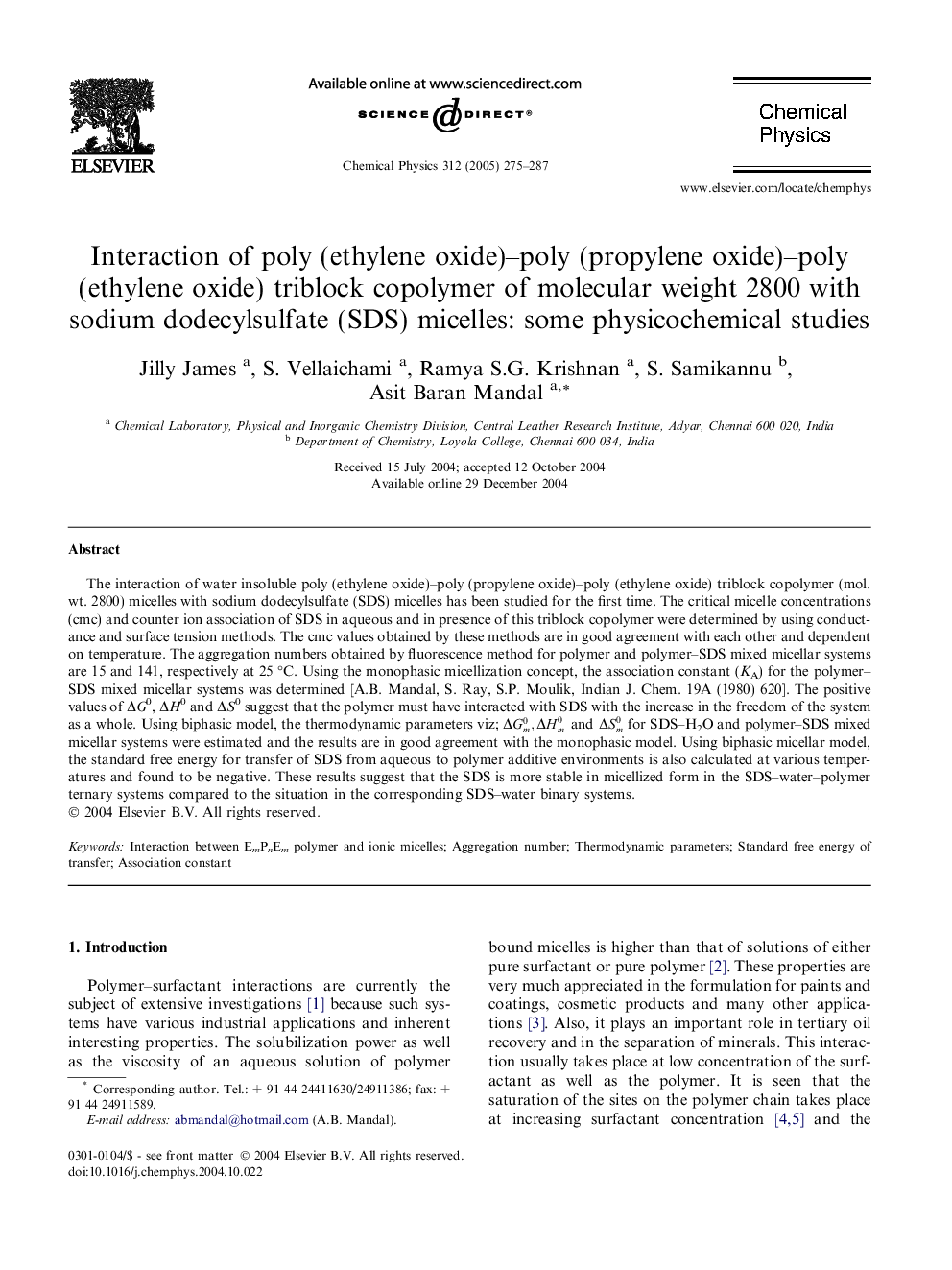| Article ID | Journal | Published Year | Pages | File Type |
|---|---|---|---|---|
| 9575282 | Chemical Physics | 2005 | 13 Pages |
Abstract
The interaction of water insoluble poly (ethylene oxide)-poly (propylene oxide)-poly (ethylene oxide) triblock copolymer (mol. wt. 2800) micelles with sodium dodecylsulfate (SDS) micelles has been studied for the first time. The critical micelle concentrations (cmc) and counter ion association of SDS in aqueous and in presence of this triblock copolymer were determined by using conductance and surface tension methods. The cmc values obtained by these methods are in good agreement with each other and dependent on temperature. The aggregation numbers obtained by fluorescence method for polymer and polymer-SDS mixed micellar systems are 15 and 141, respectively at 25 °C. Using the monophasic micellization concept, the association constant (KA) for the polymer-SDS mixed micellar systems was determined [A.B. Mandal, S. Ray, S.P. Moulik, Indian J. Chem. 19A (1980) 620]. The positive values of ÎG0, ÎH0 and ÎS0 suggest that the polymer must have interacted with SDS with the increase in the freedom of the system as a whole. Using biphasic model, the thermodynamic parameters viz; ÎGm0,ÎHm0andÎSm0 for SDS-H2O and polymer-SDS mixed micellar systems were estimated and the results are in good agreement with the monophasic model. Using biphasic micellar model, the standard free energy for transfer of SDS from aqueous to polymer additive environments is also calculated at various temperatures and found to be negative. These results suggest that the SDS is more stable in micellized form in the SDS-water-polymer ternary systems compared to the situation in the corresponding SDS-water binary systems.
Related Topics
Physical Sciences and Engineering
Chemistry
Physical and Theoretical Chemistry
Authors
Jilly James, S. Vellaichami, Ramya S.G. Krishnan, S. Samikannu, Asit Baran Mandal,
